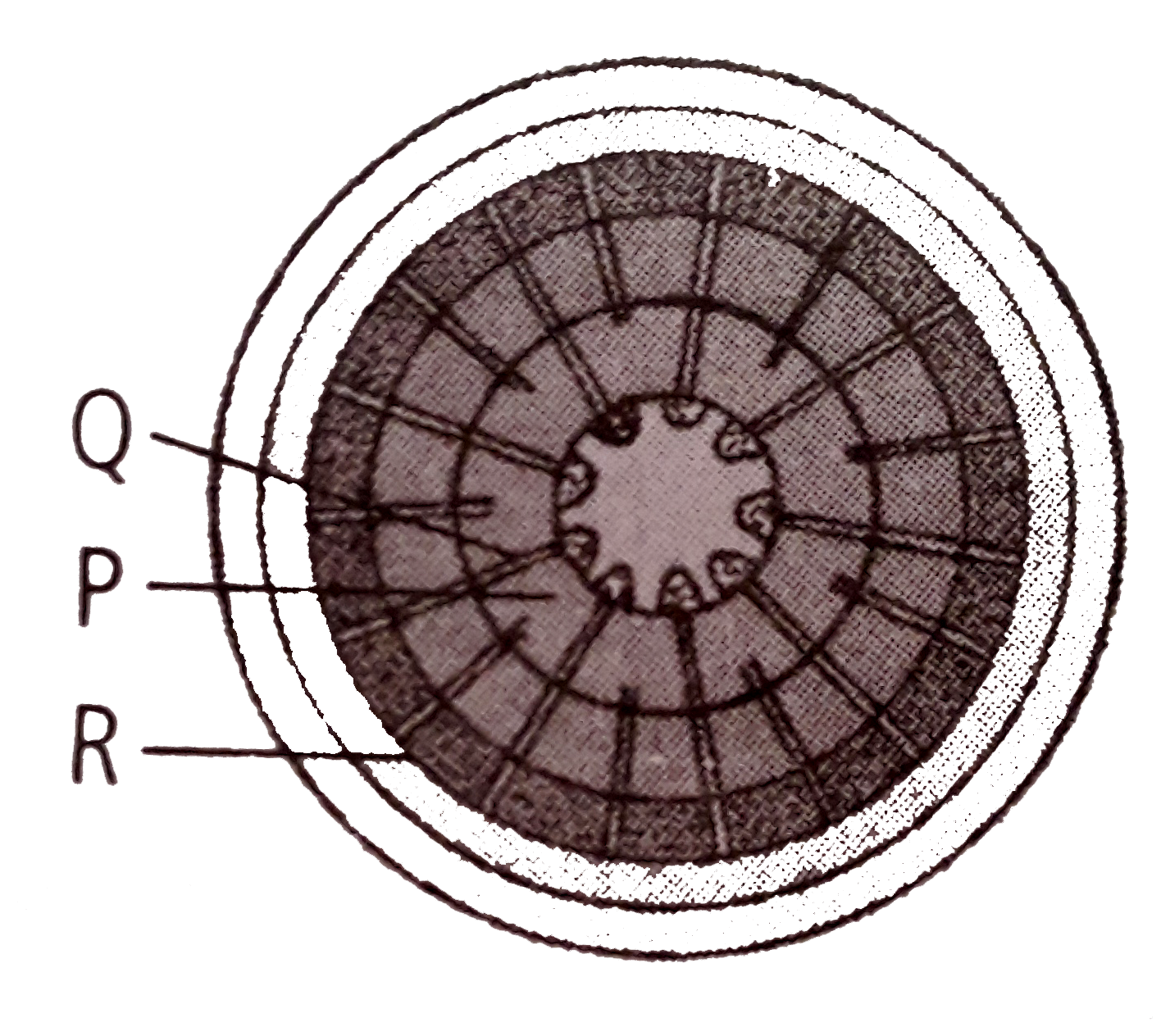In dicotyledonous stem, fascicular cambium is a meristematic tissue. It is an example of which of the following meristem ?
Lateral
Secondary
Apical
Intercalary
To solve the question regarding the classification of fascicular cambium in dicotyledonous stems, we can follow these steps:
1. Understand the Types of Meristems:
- Meristems are classified into three main types:
- Apical Meristem: Responsible for the growth in length.
- Lateral Meristem: Responsible for the growth in thickness.
- Intercalary Meristem: Found at the base of leaves or internodes, contributing to growth in length.
2. Identify the Location of Fascicular Cambium:
- Fascicular cambium is located between the xylem and phloem in vascular bundles. It is crucial for the secondary growth of stems.
3. Differentiate Between Intrafascicular and Interfascicular Cambium:
- Intrafascicular Cambium: This is the cambium found between the xylem and phloem in a vascular bundle.
- Interfascicular Cambium: This is the cambium found between two vascular bundles.
4. Determine the Role of Fascicular Cambium:
- Fascicular cambium contributes to secondary growth, which is the increase in the thickness of the stem.
5. Classify Fascicular Cambium:
- Since fascicular cambium is involved in secondary growth and is found in the vascular bundles, it is classified as a secondary meristem.
Final Answer:
Fascicular cambium is an example of secondary meristem.
---
- Meristems are classified into three main types:
- Apical Meristem: Responsible for the growth in length.
- Lateral Meristem: Responsible for the growth in thickness.
- Intercalary Meristem: Found at the base of leaves or internodes, contributing to growth in length.
- Fascicular cambium is located between the xylem and phloem in vascular bundles. It is crucial for the secondary growth of stems.
- Intrafascicular Cambium: This is the cambium found between the xylem and phloem in a vascular bundle.
- Interfascicular Cambium: This is the cambium found between two vascular bundles.
- Fascicular cambium contributes to secondary growth, which is the increase in the thickness of the stem.
- Since fascicular cambium is involved in secondary growth and is found in the vascular bundles, it is classified as a secondary meristem.
Fascicular cambium is an example of secondary meristem.
Similar Questions
Knowledge Check
Which of the following is a meristematic tissue
APhellemBPhellogenCPhellodermDPeridermFascicular cambium found in dicot stem is a
ASecondary meristemBPrimary meristemCIntercalary meristemDApical meristemWhich of the following is an example of primary lateral meristem ?
ACork cambiumBVascular cambiumCInter fascicular cambiumDIntrafascicular cambium

During the secondary growth in a dicotyledonous stem, the fusiform initials of vascular cambium give rise to which of the given labelled part?
View SolutionPlant tissues are divided into meristematic and permanent tissues on which of the following basis?
View SolutionWhich of the following is an example of tissue
View SolutionMeristematic tissue called cork cambium or phellogen.
View Solution(i) Cork cambium is an example of lateral meristem .
(ii) In the young dicot stem. Cambium present in patches as a single layer between xylem and phloem.
(iii) Interfascicular cambium and Interfascicular cambium combinedly from cambial ring.
In given Statements, which of the following are correct ?
View Solution
